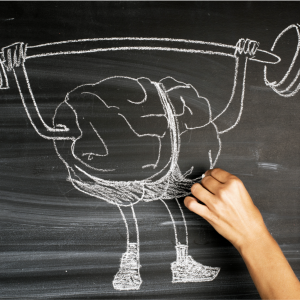Dementia is a collective type of diseases that can result in impairment of cognitive function, memory loss and behaviour change among others. The most common form of dementia is Alzheimer’s Disease.
Dementia is the second leading cause of death of Australians, and as of 2021, an estimated 472,000 Australians live with this disease. Due to its high prevalence, a significant chunk of modern science is focused on finding the cure – and cause – of dementia.
The Brain, explained
Dementia is caused by damage to brain cells, which are required for proper brain function, and therefore for effective and efficient bodily function. These changes can also have an effect on emotional function.
Certain types of dementia are linked to damage in different parts of the brain. With Alzheimers Disease, the brain cells in the hippocampus tend to be affected first, and as this is the part of the brain where memory is formed and stored, memory loss is one of the first symptoms.
Re-wiring the brain
There is significant and promising new research being released about the effects of brain neuroplasticity and its role in reducing the severity of dementia – as well as potentially preventing it from developing.
Neuroplasticity is the brain’s ability to learn a new skill or task e.g. learning how to ride a bike or playing the piano. It can almost be described as a ‘rewiring’. As youngsters, adolescents and even young adults, our brain is constantly going through neuroplasticity as we learned skills such as walking, eating on our own, learning and playing sports and finding new hobbies such as learning a musical instrument. Over time, our tendency to learn new things dissipates as we settle into life, thus reducing the amount of rewiring our brain goes through.
It is important to note that a lot of these processes happen during sleep, so a good night of sleep appropriate for age and activity level is required.
Re-wiring for other conditions
‘Re-wiring’ the brain has been extensively used in rehabilitation practices for many neuromuscular conditions and accidents, such as traumatic brain injuries and strokes. Depending on the severity of the condition, many people who suffer neuromuscular trauma must learn to do most daily activities again, such as walking, standing up and sitting down, eating and talking. This is a great example of neuroplasticity in action, and thus is promising in the field of dementia treatment and prevention as well.
Neuroplasticity and exercise
No matter the age at which an individual starts to do structured exercise, neuroplasticity is ongoing. Even the most disciplined of gym attendees learn new exercises routinely and thus their brains’ neural pathways continue to grow and develop.
It is also important to note that there is no age limit for neuroplasticity to occur. For some, the notion could be that they are too old to start exercising, but this is completely false and the benefits of starting a new skill such as a structured exercise program at any age is not only physiologically beneficial but also neurally.
Additionally, for physiological (muscles, tendons, bones and heart) as well as neural development to continue occurring, progressive exercise is required. Mastering a skill such as a single leg balance is excellent in the short term, but an individual would need to progress this skill to ensure the neural pathways in the brain keep developing. They could try standing on a more challenging surface, turning their head from side to side, or adding a weighted movement as a distraction.
Challenge
Developing your brains’ neural pathways does not have to start in a gym. Given the current lockdown situation, gyms are unavailable and starting an exercise program with no guidance is not recommended unless you have the help of a professional. Here are some things you can do in your daily life to challenge yourself and continue your brain’s neuroplasticity!
- Try brushing your teeth or hair with the opposite hand to your dominant or regular hand
- If you are timing yourself on a balance or other exercise activity at home, try counting backwards or in intervals of 2, 3 or 5 – make sure you are safe while doing this!
- Try a new skill you can do from the comfort of your home, such as crosswords, sudoku, crochet, knitting or a puzzle – but make sure to change it up weekly or fortnightly

